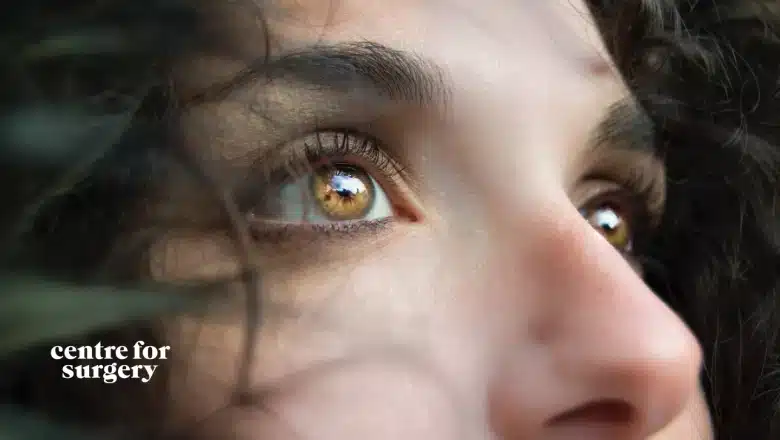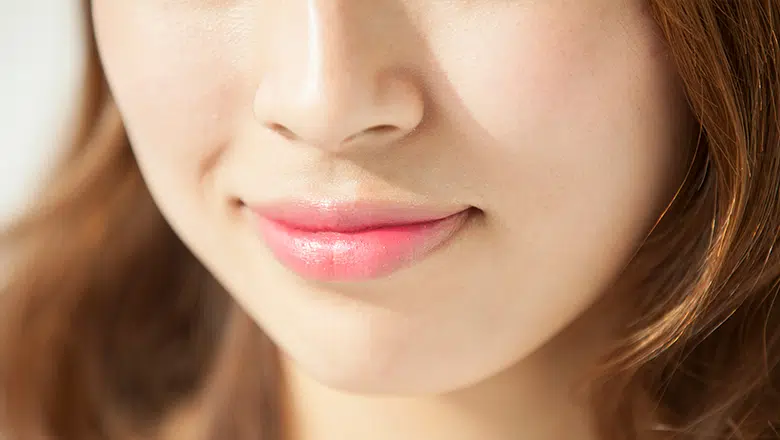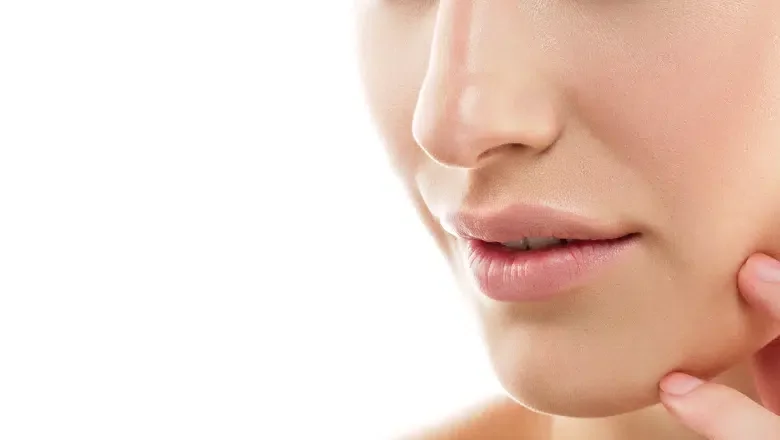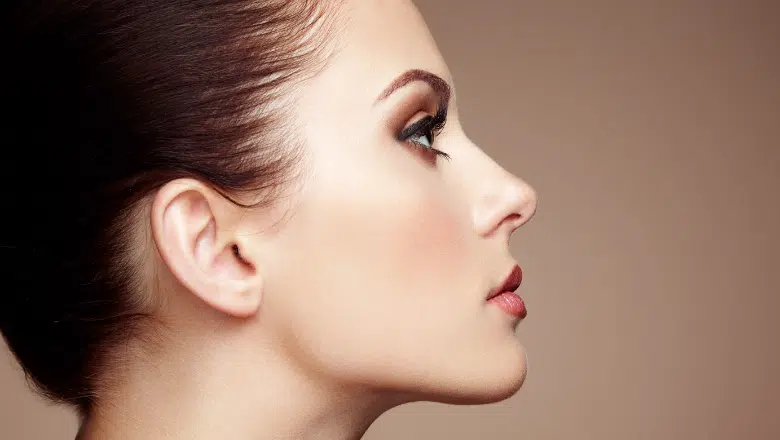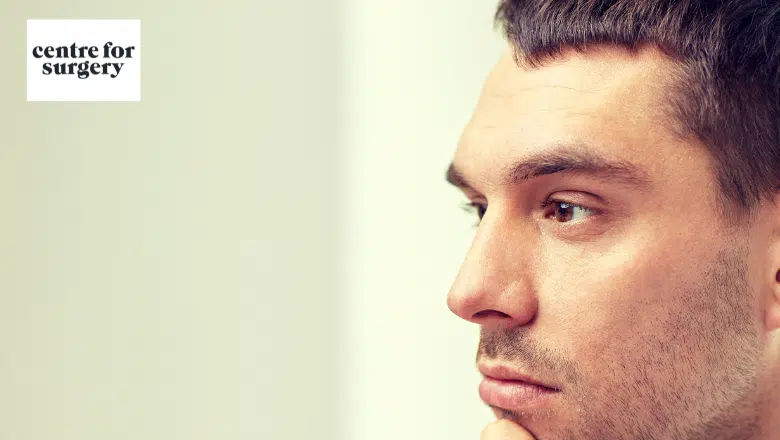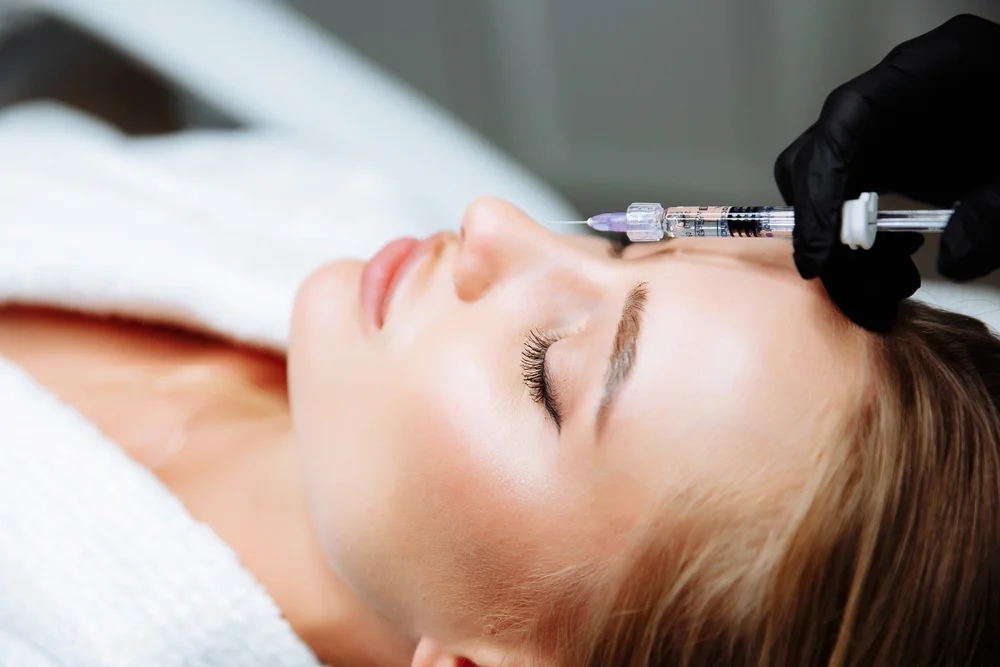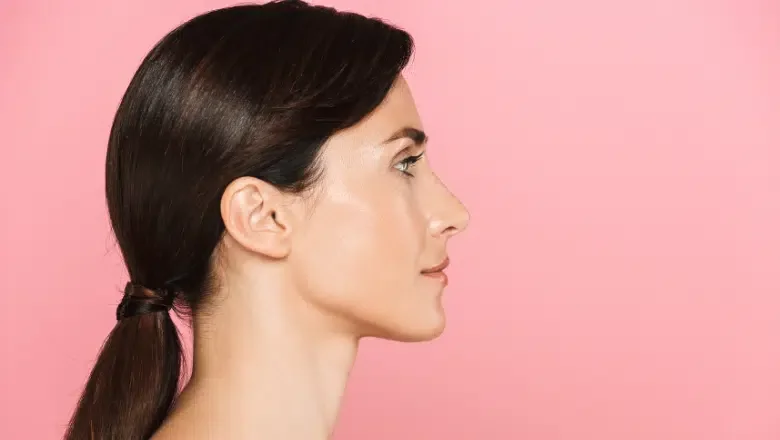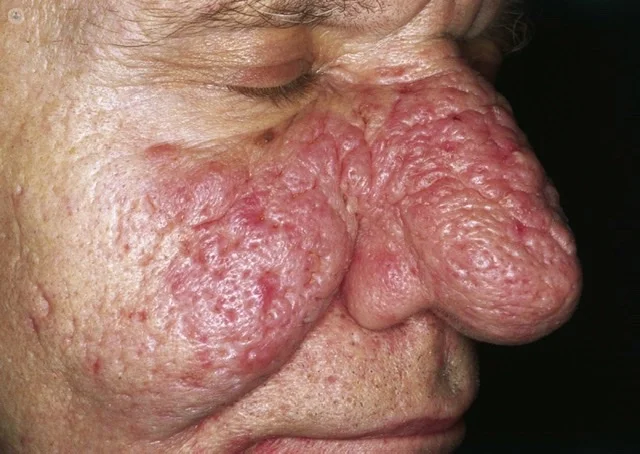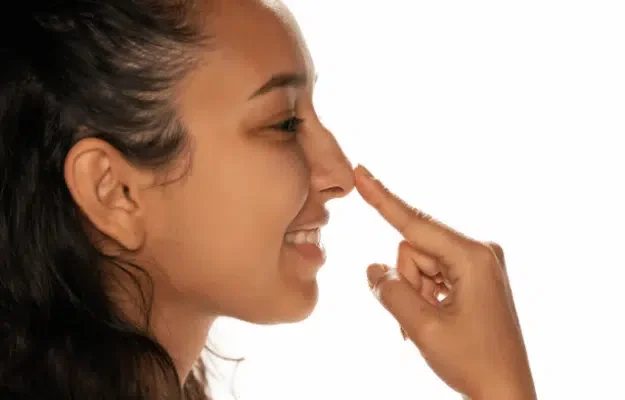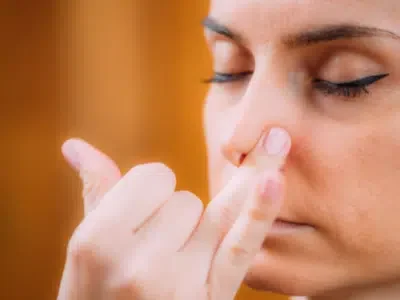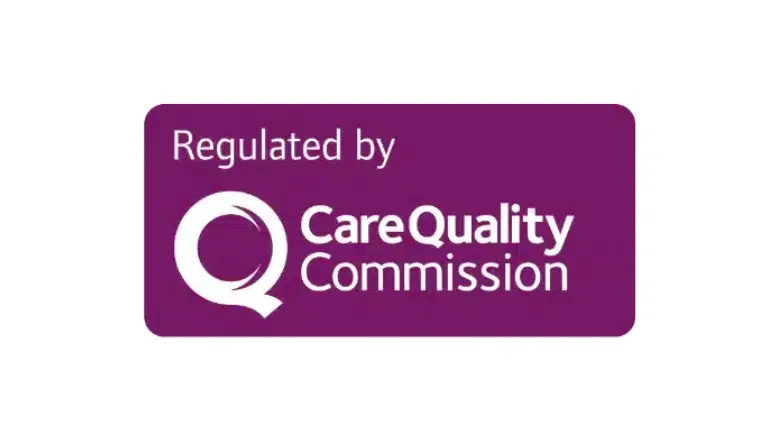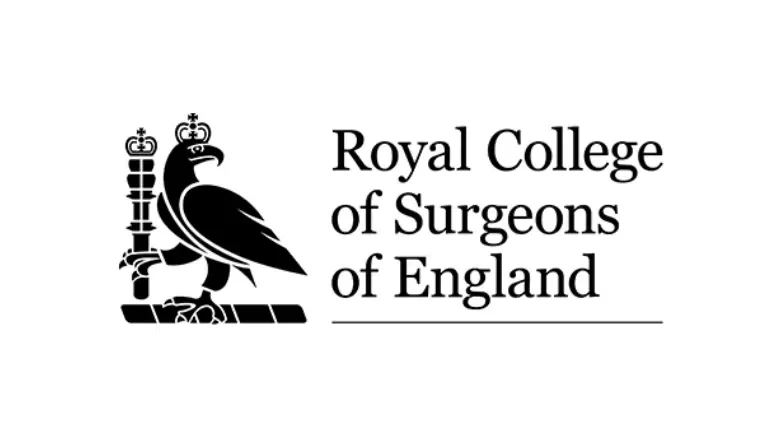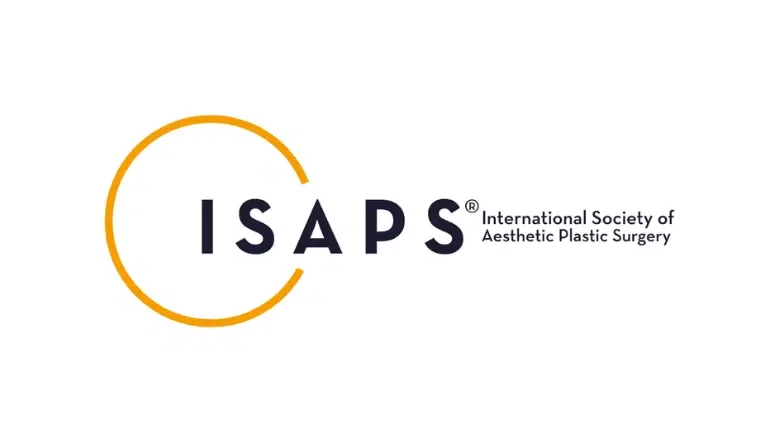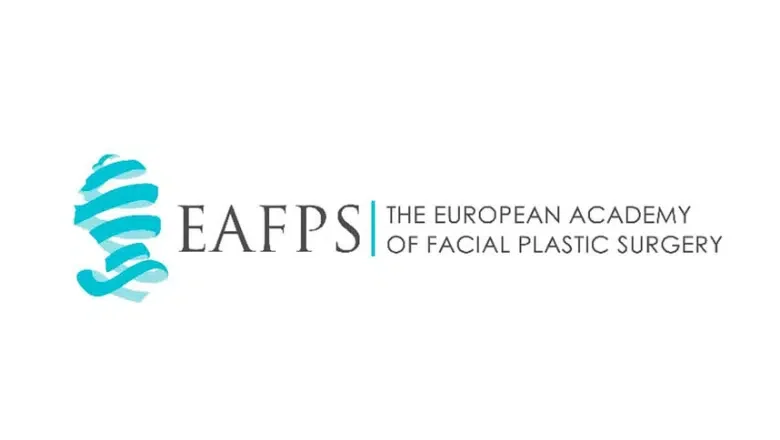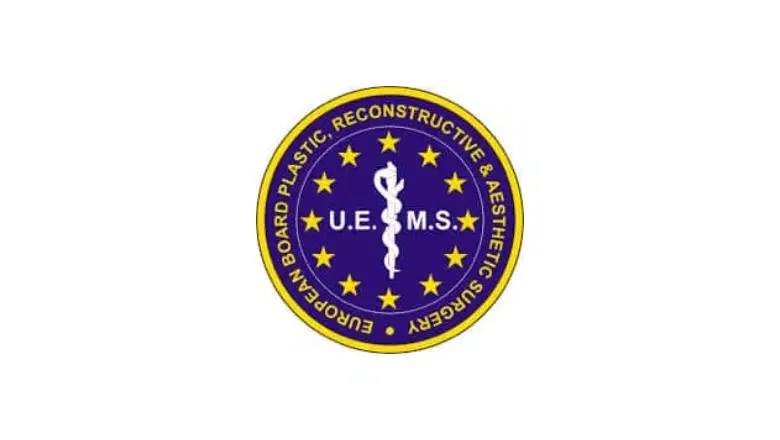Nose Surgery London & UK
Rhinoplasty, commonly known as nose surgery, is a surgical procedure that alters the shape and size of the nose. It can be performed for both cosmetic and functional reasons, such as to change the appearance of the nose or to improve breathing problems.
RELATED: Nose Surgery FAQs – Q&A about Rhinoplasty
Nose surgery has several benefits, including:
- Improving the appearance of the nose: Rhinoplasty can reshape the nose to make it more proportionate with the rest of the face and enhance a person’s overall appearance.
- Improving breathing: A deviated septum or other structural issues within the nose can be corrected during rhinoplasty, which can improve a person’s ability to breathe.
- Correcting injuries: Rhinoplasty can be used to repair injuries to the nose, such as those caused by sports or accidents.
- Reducing sinus problems: If a patient has chronic sinus problems, a rhinoplasty may improve their sinus symptoms.
Tip Rhinoplasty (Tip Plasty)
Tip Rhinoplasty or Tip Plasty is a surgical procedure performed to refine and reshape the tip of the nose. This procedure can be performed to improve the appearance of the nose and to enhance the overall balance and proportion of the face. Tip rhinoplasty can address issues such as a drooping tip, a bulbous tip, or asymmetry of the nose tip. Nose tip surgery can be performed alone or in conjunction with other nose surgeries, such as rhinoplasty. The goal of tip rhinoplasty is to achieve a more aesthetically pleasing appearance of the nose that enhances the patient’s overall facial appearance.
Alar Base Reduction (Alarplasty)
Alar base reduction is a surgical procedure performed to reduce the width of the nostrils and to improve the overall appearance of the nose. This procedure is commonly performed in conjunction with other nose surgeries, such as rhinoplasty, to enhance the balance and proportion of the nose. Alar base reduction is typically performed by removing small wedges of tissue from the sides of the nostrils to narrow the alar base and reshape the nostrils. The goal of alar base reduction is to achieve a more aesthetically pleasing appearance of the nose and to enhance the overall balance of the face.
Turbinate Reduction
Turbinoplasty is a surgical procedure that reduces the size of the turbinates – the bony structures in the nasal passage – to improve airflow. Turbinates warm, filter and moisten the air we breathe, but when overly large, they can obstruct air passage causing breathing difficulties. Turbinoplasty is a less invasive solution that can relieve symptoms like nasal congestion, snoring, or issues related to sleep apnoea. By modifying the turbinates rather than completely removing them, it maintains their beneficial function while enhancing the patient’s ability to breathe more freely, thus significantly improving their quality of life.
Septorhinoplasty
Septorhinoplasty is designed to address both aesthetic and functional concerns affecting the nose in a single operation. Rhinoplasty surgery can improve the appearance of the nose by surgically altering its size or shape. A septoplasty can be performed in the same procedure to improve a deviated septum for people who have difficulty breathing. Having both procedures together means only one recovery period is needed making the cost of the procedure much more affordable in the UK.
Male Rhinoplasty (Nose Job for Men)
Male rhinoplasty, also known as a male nose job, is a facial cosmetic surgery procedure that can surgically alter the size and shape of the nose, creating more balanced features and facial harmony. Rhinoplasty for men can alter the appearance of a protruding bump, wide tip or crooked bridge, and it can also help restore nasal function with improved breathing following a traumatic injury.
Ethnic Rhinoplasty
Ethnic rhinoplasty is a specialised form of rhinoplasty that respects and enhances the natural beauty of individuals from diverse ethnic backgrounds. This procedure is tailored to address the unique facial features and skin types of patients with African, Asian, Indian, Pakistani, Middle Eastern, and other non-Caucasian heritages. The goal is not to erase these distinguishing characteristics but to refine the nose in a way that harmonises with the patient’s ethnic identity and facial aesthetics. Our skilled surgeons consider factors such as skin thickness, nasal structure, and cultural beauty standards, ensuring results that are both beautiful and true to the patient’s heritage.
Ultrasonic Rhinoplasty
Ultrasonic rhinoplasty represents a cutting-edge advancement in nasal surgery, utilizing high-frequency ultrasonic waves to precisely sculpt the nasal bones, minimising trauma to the surrounding tissues. This innovative technique offers a significant improvement over traditional methods, allowing for more accurate shaping and a smoother recovery process. The use of ultrasonic tools enables surgeons to make delicate adjustments with enhanced control and precision, reducing the risk of bruising and swelling post-surgery.
Preservation Rhinoplasty
Preservation rhinoplasty is a cutting-edge approach in nasal surgery that aims to refine the nose’s appearance while keeping its original structure largely intact. Differing from traditional methods, which often involve significant alterations, this technique focuses on making subtle adjustments within the nose’s existing framework. Ideal for individuals seeking minor modifications, it promises a more natural outcome and a smoother recovery process. By minimising invasiveness, preservation rhinoplasty reduces post-surgical swelling and bruising, offering patients a quicker return to normalcy.
Revision Rhinoplasty
Revision rhinoplasty, also known as secondary rhinoplasty, is a surgical procedure performed to correct or improve the results of previous nose surgery. Revision rhinoplasty can address issues such as nasal asymmetry, a nasal hump, a drooping tip, or breathing problems that were not resolved by the initial procedure. This procedure is typically more complex than a primary rhinoplasty, as the surgeon must work within the framework of the previous surgery to achieve the desired results. The goal of revision rhinoplasty is to achieve a natural-looking and functional nose that enhances the patient’s overall facial appearance.
Non Surgical Rhinoplasty
Liquid rhinoplasty, also known as non-surgical nose reshaping, is an innovative cosmetic procedure that uses injectable fillers to alter and enhance the nasal shape without surgery. It’s a quick, minimally invasive treatment ideal for individuals seeking to correct imperfections like small bumps, asymmetry, or a lack of definition. The procedure involves injecting hyaluronic acid-based fillers, a naturally occurring substance in the body, into specific areas of the nose. Results are immediate and can last from 12 to 24 months. With no downtime required, it’s a popular choice for those wanting a temporary, reversible option with less risk and recovery time compared to traditional rhinoplasty.
One Stitch Nose Lift
A one-stitch nose lift, or a rhinoplasty suspension, is designed to lift a drooping nasal tip using specialised sutures. Compared with a full rhinoplasty, the treatment does not involve breaking the nasal bones or applying a nasal splint. A one-stitch nose lift can be easily carried out under a local anaesthetic as an outpatient.
Rhinophyma Surgery
Rhinophyma surgery is a specialised medical procedure aimed at treating rhinophyma, a severe form of rosacea that causes the nose to become large, bulbous, and red. This condition primarily affects the nose’s skin, leading to thickening and an irregular, bumpy surface. The surgery seeks to reshape the nose by removing excess tissue, improving both the nose’s appearance and function. The goal is to restore a more natural nasal contour, enhancing the patient’s self-esteem and comfort. Post-operative care is crucial for healing and achieving optimal results.
Laser Snoring Treatment (NightLase)
NightLase is a non-surgical laser treatment used to reduce snoring by using laser energy to shrink and tighten the soft tissues of the uvula and soft palate. The procedure is performed by a trained practitioner who uses a laser to heat the tissues in the back of the throat, which can help to reduce vibration and collapse of the airway that causes snoring. The procedure is typically performed over a series of 3 sessions and is done on an outpatient basis with no downtime. NightLase uses laser energy to heat the tissues in the back of the throat, which can help to reduce vibration and collapse of the airway that causes snoring.

